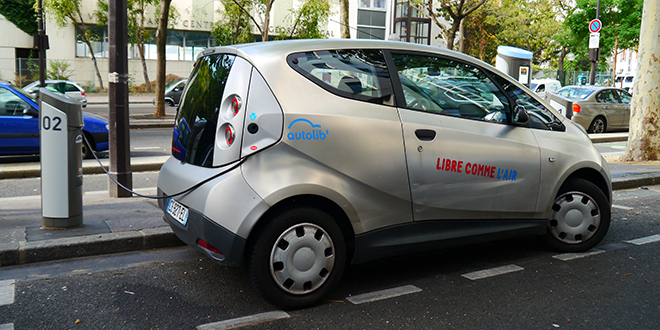Solid-state batteries are becoming the next big thing in energy storage, with the promise of low volatility, high energy density and lower-cost manufacturing. With academia, industry and government collaborating on the next wave of development, we may see progress in this realm. Recently, the Department of Energy’s Oak Ridge National Laboratory and Solid Power Inc. of Louisville, Colo., signed an exclusive agreement licensing lithium-sulfur materials for next-generation batteries. A team of current and former ORNL researchers including Chengdu Liang, Nancy Dudney, Adam Rondinone, Jong Keum, Jane Howe, Wujun Fu, Ezhiylmurugan Rangasamy, Zhan Lin and Zengcai Liu developed the technology. This included designing and testing an all-solid lithium-sulfur battery “with approximately four times the energy density of conventional lithium-ion technologies.” It featured a “new Oak Ridge-designed sulfur-rich cathode and a lithium anode with a solid electrolyte material, also developed at ORNL.” Oak Ridge has also licensed a method of forming lithium-containing electrolytes using wet chemical synthesis, which may comprise β-Li3PS4 or Li4P2S7. Reportedly, Solid …
First Seeo, Now Sakti3
Bosch’s acquisition of Seeo Inc. is followed within seven weeks by news that an innovator in another area has acquired a battery developer. Electric-vehiclenews.com announced that “Dyson, the U.K. company famous for its bagless vacuum cleaners, has acquired Michigan-based solid-state battery startup Sakti3 for $90 million and announced plans to build an important $1 billion battery factory to mass produce the next generation battery technology.” The report noted this was the second recent purchase of a promising start-up company by a larger, richer firm. Bosch acquired Seeo Inc. to benefit from its solid-state technology, which like most solid-state batteries would, among other benefits, reduce or eliminate fire hazards – something brought to the fore by recent FAA rulings on shipping of lithium batteries. Sakti3 has announced a solid-state cell with 400 Watt-hours per kilogram energy density, roughly twice that of most competitors, including Tesla’s – reputed to be around 230 Wh/kg. Although Sakti3 founder and CEO Ann Marie Sastry joins Dyson as …
Dr. Yi Cui’s Latest, a Solid-state Electrolyte
Green Car Congress reports that, “Stanford researchers led by Professor Yi Cui have used ceramic nanowire fillers to enhance the ionic conductivity of polymer-based solid electrolyte by three orders of magnitude. The ceramic-nanowire filled composite polymer electrolyte also shows an enlarged electrochemical stability window.” With solid-state batteries coming to the fore through efforts by Ann Marie Sastry at Sakti 3 and Qichao Hu at Solid Energy Systems, an improved solid electrolyte would seem to offer greater battery safety and stability “when compared with conventional liquid electrolytes. The abstract for the Stanford researchers’ paper in the journal ACS Nano Letters explains that “Currently, the low mobility of lithium ions in solid electrolytes limits their practical application. The ongoing research over the past few decades on dispersing of ceramic nanoparticles into polymer matrix has been proved effective to enhance ionic conductivity although it is challenging to form the efficiency networks of ionic conduction with nanoparticles. In this work, we first report that ceramic nanowire …
EAS IX to be A Gala Gathering
Dr. Seeley sent this along today. On May 1, 2, 2015, the world’s leading experts will converge for the 9th Annual CAFE Electric Aircraft Symposium in the beautiful Sonoma Wine Country. The confirmed presenters include: Airbus on “The e-Fan Design” Michigan’s Satki3 CEO Ann Marie Sastry on “Solid State Energy Storage” Italy’s Eric Raymond of GFC I Team-eGenius on “Sunstar and the SunSeeker Duo” Slovenia’s Tine Tomazic of GFC I Team Pipistrel USA on “Converting GA Aircraft to Electric Propulsion” UCR’s Zach Favors on “Beach Sand for Long Cycle Life Li-ion Batteries” Northrop-Grumman’s J. Philip Barnes on “Regenerative Electric Flight” NASA’s Dr. Eric Darcy on “Battery Safety” Ford/Ricardo’s Neil Johnson on “Li-ion BMS & Gauging” Launchpoint’s Michael Ricci on “Propulsion by Wire” Also expected are Northrop-Grumman’s Barnaby Wainfan on “Low Aspect Ratio Electric Aircraft”, Ray Pekar of Autoliv on “Airbags for Impact, Rafts and EMAS”, Bose Automotive Suspension lead Neal Lackritz on “Active Suspension for Sky Taxis” and Jeff DeGrange of …
2X Solid State Batteries?
Applied Materials, located in Sunnyvale, California, designs and makes equipment used in the manufacture of computer chips and other miniature electronic devices. Your editor worked there on assignment from his engineering firm for six months 15 years ago, documenting and verifying the equipment and control systems for their newest facility. Even then, miniature was wild understatement, with the company crafting machinery that could produce 0.18 µm lines in silicon chips. In the last two decades, line widths have shrunk to 0.03 µm, and the number of elements on chips has increased proportionally. This makes nano manufacturing a highly precise endeavor, and one which seems to defy credulity with lower costs for the ever-increasing number of chips being made. It’s this type of manufacturing expertise which makes possible the electronic life we lead today and one that relies increasingly on energy storage technology. The very things that make solid state computing possible could produce solid state batteries – an advantageous storage …

